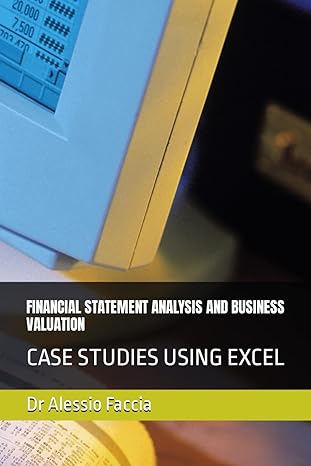Answered step by step
Verified Expert Solution
Question
1 Approved Answer
Date January 1 January 10 March 14 Activities Beginning inventory Sales Purchase March 15 Sales July 30 Purchase October 5 October 26 Sales Purchase Totals
Date January 1 January 10 March 14 Activities Beginning inventory Sales Purchase March 15 Sales July 30 Purchase October 5 October 26 Sales Purchase Totals Units Acquired at Cost Unita Sold at Retail 235 unita $11.40- $ 2,679 170 units $41.40 360 units $16.40- 5,904 290 units $41.40 435 unita $21.40- 9,309 410 unite $41.40 135 units 1,165 units $26.40- 3,564 $ 21,456 870 units Exercise 5-9 (Algo) Specific identification LO P1 Ending Inventory consists of 65 units from the March 14 purchase, 95 units from the July 30 purchase, and all 135 units from the October 26 purchase. Using the specific identification method, calculate the following. a) Cost of Goods Sold using Specific Identification Available for Sale Cost of Goods Sold Ending Inventory Date Activity of units Cost Per Unit # of units Bold Cost Per Unit COGS Ending Inventory Units Cost Per Unit Ending Inventow Cost January 1 Beginning Inventory 235 March 14 Purchase 360 July 30 Purchase 435 October 26 Purchase 135 1,165 b) Gross Margin using Specific Identification Less: Equals
Step by Step Solution
There are 3 Steps involved in it
Step: 1

Get Instant Access to Expert-Tailored Solutions
See step-by-step solutions with expert insights and AI powered tools for academic success
Step: 2

Step: 3

Ace Your Homework with AI
Get the answers you need in no time with our AI-driven, step-by-step assistance
Get Started


